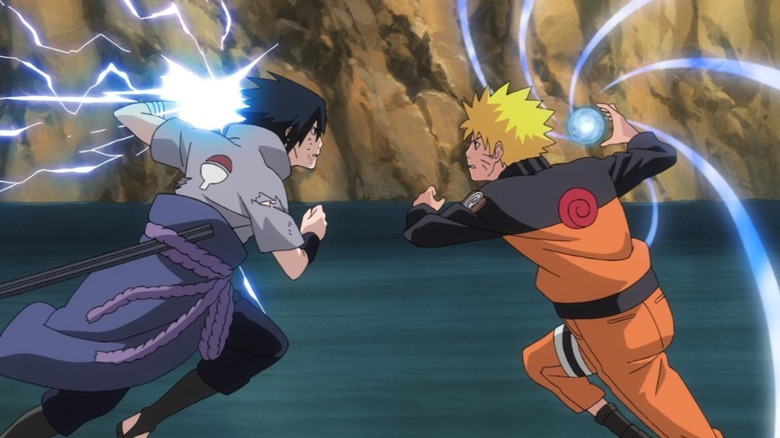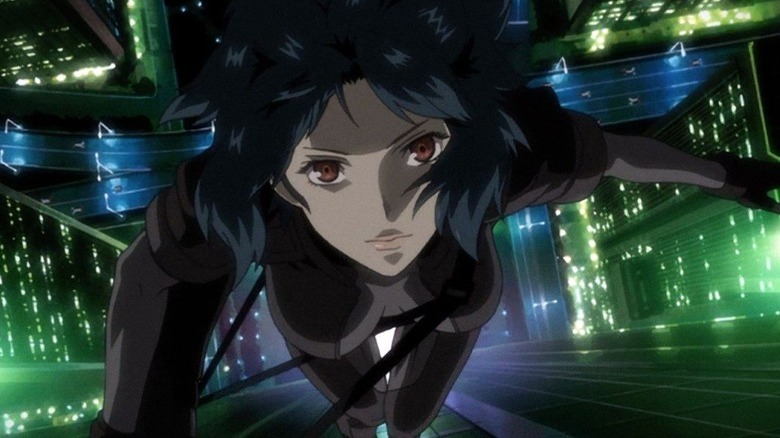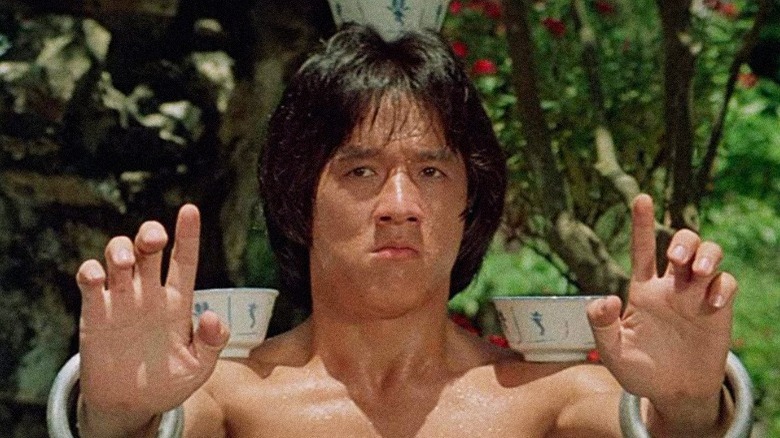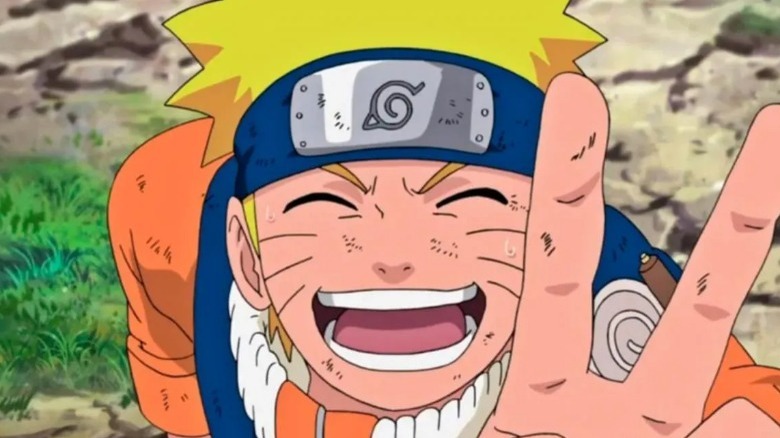Why The Action In Naruto Looks So Good
Masashi Kishimoto's "Naruto" continues to compel manga readers thanks to the franchise's complex worldbuilding and many, many beloved characters, and the subsequent anime adaptations ("Naruto" and "Naruto Shippuden") only helped cement Kishimoto's legacy. The enduring appeal of the "Naruto" franchise can be attributed to a lot of factors, including a protagonist who is equal parts heroic and knuckleheaded; a dense, interconnected world with meaningful stakes; and layered character dynamics worth rooting for.
Although the artistic brilliance of Kishimoto's stunningly rendered manga panels does not always translate smoothly into animation, the result is still pretty solid, as the fight sequences in both the manga and the anime stand out due to the way in which they're conceived. These action sequences rely on a lot of physical gesturing — more than the average fight sequence in any medium — as the world of "Naruto" heavily relies on jutsu and hand signs, which are often combined with exaggerated physical maneuvers designed to look pretty cool.
However, did Kishimoto draw any kind of influence for these panels from action films or established actors in the action genre? Let's dive deeper into this.
Influenced by pioneers in the action genre
In an interview with the Los Angeles Times, Kishimoto delved into the cinematic influences that shaped Naruto Uzumaki's storyline, and his inspirations range from Takeshi Kitano's yakuza crime dramas to the action-centered excess that is a staple in Quentin Tarantino's films.
Speaking about Tarantino's technique of setting up a character with the aid of slow-motion close-ups, Kishimoto lamented the difficulties inherent in accomplishing this effect in manga panels, due to their monochromatic nature. As black and white are the only colors that can be used to convey emotions in a hand-drawn character via either their expressions or gestures, Kishimoto also adopted Michael Bay's method of juxtaposing a character against a well-lit background in order for the panels to pop out in seminal sequences.
Apart from this, Kishimoto was also greatly influenced by contemporary manga artists and popular animators, including the creators of the groundbreaking "Akira" and "Dragon Ball" manga series, along with Masamune Shirow's futuristic extravaganza, "Ghost in the Shell" (which was subsequently adapted by Mamoru Oshii into an iconic animated film). In terms of sketching techniques, he meticulously replicated the drawings in "Jin-Roh: The Wolf Brigade" and "Ninku" — the former is a sci-fi fantasy tale while the latter revolves around ninjas, which "Naruto" is primarily about.
Jackie Chan's fighting style definitely played a role
It is not difficult to trace back Kishimoto's inspirations while planning out certain scenes in "Naruto" to trailblazing works of art like "Akira," as this is clear from the way in which he chose to draw the manga panels in which Deidara is sitting on Gaara's corpse. A fish-eye lens effect is used to bring the scene to life, with an overhead angle of Deidara's head being in focus, while Gaara's body looks smaller in the background.
However, did Kishimoto take inspiration from films to design fight scenes that feature a lot of physical movement between two or more characters? The answer is yes. In a fan-translated Kobayashi interview, the manga-ka said he was heavily inspired by the action in Jackie Chan films (this is no surprise, as Rock Lee's character seems like a homage to Chan's action chops in "Drunken Master") and the idea of "double-action," a staple in Jackie Chan movies. "Double action" describes a technique when a fist lands a punch in a fight scene, this major impact is zoomed in on and displayed from several angles for maximum dramatic effect.
Kishimoto goes a step further to refine his own methods when it comes to crafting kickass action sequences, as he intentionally focuses on the body of the person being kicked around. This shifts the attention to the body "recoiling" with the effect of the punch/kick, making it more resonant within a certain context. Moreover, Kishimoto also mixes up a range of fighting styles: while Rock Lee distinctively employs mixed martial arts during fights, other characters, including Naruto have a more freestyle way of fighting, wherein each character plays to their respective strengths (such as ocular jutsu or genjutsu, which are more psychological than physical in nature).
What makes Naruto so appealing as a character?
Both Kishimoto's manga series and its subsequent anime adaptation, while sporting 1001 branching storylines that connect seamlessly somewhere down the line, find its way back to Naruto, the titular hero of the franchise. Yes, there is a lot going on in the background: every character has a distinct and fleshed out backstory, the political implications of strategic shinobi alliances are ever-shifting, and there is a world war that everyone is forced to participate in. However, everything connects back to our beloved Nine-Tailed jinchūriki, who, despite having matured into a powerful shinobi, still retains his classic silliness that makes him the endearing character he is.
Kishimoto talked about Naruto's appeal in the Los Angeles interview, saying that the reason why the character is so universally loved is that everyone can relate to him. However, he also added that Naruto's character was inspired by his own personal experiences at school, and "based on [his] self-image of [his] own childhood, but different from how [he] really was." While Kishimoto described himself as a "poor student" who gave up easily, he infused Naruto with traits that were completely opposite — a knuckleheaded boy who fails at school, but makes up for his imperfections with unending drive and optimism.
Naruto is not considered a cool kid (unlike his rival Sasuke, who is both adored and abhorred by many), as he is considered a "loser" for failing his tests and his troublemaking nature. However, his arc from a somewhat-stupid, lonely boy to a powerful, mature, reliable shinobi worthy of respect is an incredibly uplifting one, which is probably the reason why manga readers and anime viewers revisit his story time and again. Thus, the tale of Naruto Uzumaki lives on.



